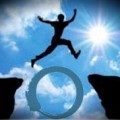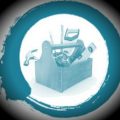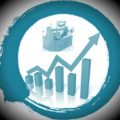In this series of posts we have looked at how to use Lean Startup during the ideation and discovery phases. We also dove into the experimentation process and the tools to use in the discovery phase.
In this post, we’ll look at how to use Lean Startup in your pre-sell phase.
What is the pre-sell phase?
 The pre-sell phase begins when you have sufficiently tested your leap-of-faith assumptions of your business model to be confident that you have a shot at a viable business. This not because you believe so (as you did in the ideation phase) but because most (or all) of your business’s stakeholders (potential customers, suppliers, distributors, etc.) have told you so.
The pre-sell phase begins when you have sufficiently tested your leap-of-faith assumptions of your business model to be confident that you have a shot at a viable business. This not because you believe so (as you did in the ideation phase) but because most (or all) of your business’s stakeholders (potential customers, suppliers, distributors, etc.) have told you so.
Typically, during the pre-sell phase you will be:
- Finding a (or several) co-founder(s)
- On-boarding your first employees
- Developing your product/service
- Starting to put into place some key partnerships
This is also the phase at which you will start getting real feedback from paying customers[1] (closer to the end of the pre-sell phase) and other stakeholders. It’s the reality test.
A test, unfortunately, many startup ideas fail. It’s when you will either:
- Make significant pivots,
- Change your mission entirely (go back to square one)
- Throw in the towel, or
- Confirm your business model
The end of this stage, when successful, is also often the time to go for seed funding.
Why continue experimenting?
 So now that you have confirmed your business model, why should you continue experimenting? It would be so much faster to just go full steam ahead and develop.
So now that you have confirmed your business model, why should you continue experimenting? It would be so much faster to just go full steam ahead and develop.
Your ideation and discovery phases were mostly planning. As you know, plans usually don’t work out the way we think they will.
Also, during the time you take to put in place your business model, elements of your business’s eco-system as well as market realities will change. The higher the volatility of your business environment, the more important it is for you to test the elements of your business model while developing. Otherwise you may expand great efforts and resources to develop key partnerships, distribution networks, and develop your product/services for nothing.
This may not seem so bad from this end of the journey. Entrepreneurs who put every ounce of energy they had and every penny they owned (and some they don’t), for a few years, in a business that doesn’t lift off will tell you it’s as difficult as going through a death in the family. Some never fully recover.
Lean Startup experiments in the pre-sell stage
The mechanics of the experiments we saw in the discovery stage will be the same.
You will still start by asking yourself; Will the negative impact on my future business be significant if the assumption I am making (regarding whatever part of your startup you are currently working on) isn’t real? If the answer is yes, you turn it into a hypothesis you can test. You design your experiment using tools to minimize your efforts, chose your metric and standard and execute your experiment.
By this time, you will be getting very good at experimenting. Hence most of your experiments will take you less than a couple of days to run and often only a few hours or minutes.
Also, because you will have gotten out of the building often during your discovery phase experiments, you won’t need to talk to your stakeholder face to face as much. Many of your experiments will be done on the web or over the phone. You can also hire people to do them for you.
There will be times however when you aren’t sure of your next steps. This is usually the flag that means you need to go be around your potential customers. Talking or observing them. They will invariably show you the way.
At this stage, you will not only be testing elements of your product/service you will also be testing your distribution channels. The web will be your first one if you’re using it. Also, if you are thinking of launching in markets that are not physically close to you, now is the time to start testing with those markets.
Not only will you be familiarizing yourself with the tools to find those markets but also you will, hopefully, have developed the reflex to go to the Lean Startup community for assistance.
The tools of Lean Startup
 Now that you will most likely have a, or several, co-founder(s) and employee(s), often not in the same city or working space, efficient communication will be a real need.
Now that you will most likely have a, or several, co-founder(s) and employee(s), often not in the same city or working space, efficient communication will be a real need.
Slack, Trello and Dropbox may already be part of your daily routine. You may now want higher performance project management tools (such as Asana, Jira or Wrike[2]) or to start taking notice of Slack management best practices.
If you’ve embraced the integrated multiplatform communication route of Slack, you may also want to look at some of its competitors such as Bitrix24 and HipChat.
If your product is IT application, you’ll want to use one of the thousands of productivity apps available, often for free, to help you develop and test it. Tools such as Balsamiq Mockups , Fluid UI or HotGloo for wireframing. GitHub, Zappier or LucidChart for developing your application. Test Fairy, Hiptest or SauceLabs for automated testing. Once your app is functional you can also put it up on Product Hunt and see what kind of reaction you get from a crowd of mostly innovators and early adopters.
If you are developing a non IT product, you can look for tools such as Ask Your Target Market (AYTM), Facebook or Survey Monkey and combine them with any potential customer email lists or profiles you have already collected.
You will also need to use your creativity to design experiments such as webinars or gatherings to have potential users interact with your product. Tools such as Meetup, Eventbrite, GotoMeeting will be very useful.
When you want to start testing packaging and pricing, A/B testing will be your friend. A/B testing is also very useful to test the conversion rates of different elements of your web pages. Tools such as Unbounce, Optimizely and LauchRock will be necessary unless you hold a degree in statistics.
If you are launching a new restaurant or brick and mortar business sites such as Potloc can help you find the best location and get feedback from potential customers.
Upping your game on metrics
 Experimenting and collecting all this information is great. You’ll need however to store, crunch and make sense of all of this data.
Experimenting and collecting all this information is great. You’ll need however to store, crunch and make sense of all of this data.
You’ll also need to figure out what metrics will be the key ones for your business. If you haven’t read Lean Analytics (Croll & Yoskovitz) yet, you need to by now.
Analytics is one of the parts of Lean Startup that isn’t intuitive. There is knowledge involved here, quite a bit of it. The learning curve is steep. If you will be running an online business (fully online or parts of it) you definitely need some deep analytics knowledge in your company.
Zoho Reports, Segments and Tableau are all great options. Initially you may however simply use an Excel spreadsheet in conjunction with Google Analytics. By the end of this stage, you may find however that the home grown solution requires too much time to manage and you’ll see value in the previously mentioned apps.
As you can see applying the Lean Startup approach gets easier and easier as your startup grows.
The next post of this series will be on how to apply Lean Startup during the concierge phase of your startup.
[1] Although you may be selling at a discount or simply selling and reimbursing as your product is not yet ready.
[2] Doesn’t integrate with Slack









